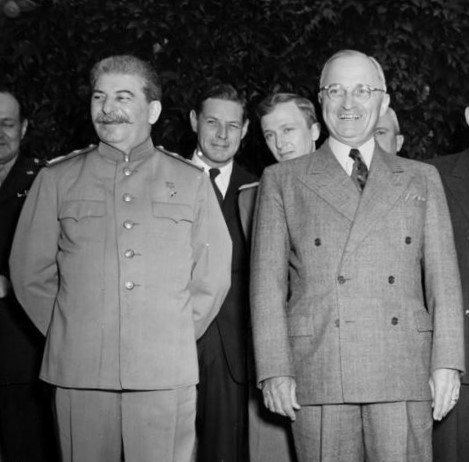(Korean War History) Post #33 The Division of Korea, 1945-1948
Prof. Kathryn Weathersby

In the last post we saw that in the spring of 1947 the US military concluded that American prestige would be damaged if they lost the ideological battle with the Soviet Union over Korea. The Joint Chiefs of Staff further argued that if they abandoned this struggle over the future government of Korea, they “would confirm the suspicion that the United States is not really determined to accept the responsibilities and obligations of world leadership, with consequent detriment to our efforts to bolster those countries of Western Europe which are of primary and vital importance to our national security.”
This logic not only led the US to hold the line on creating a new government for Korea, resulting the following year in the establishment of separate states on the peninsula, but also led Washington to intervene militarily to repel the Soviet-backed invasion by North Korea in 1950. It is therefore important to look more closely at this perspective.
Before 1914, the great economic potential of the United States had not yet been realized. During the first world war, however, economic power began to shift to America as the European powers bought vast quantities of necessary goods from the newly expanding American industries. Since much of these purchases were on credit, the US emerged as the world’s leading creditor as well as the largest owner of gold. American politicians naturally began to debate how the country would take its place among the world’s great powers. Republican leaders argued that the US must create the instruments already possessed by the European powers – a central bank and strong army and navy. The Democratic President Woodrow Wilson, on the other hand, insisted that rather than joining the struggle of imperialist states, the US would use its new power to enforce an enduring peace.
Wilson’s efforts failed spectacularly, as the 1920’s and 30’s gave rise to fascism, communism, and worldwide economic depression. Then, when the second world war destroyed the wealth and power of the European and Japanese imperialists, the two new states on either edge of Europe – the Soviet Union and the United States – were left as the world’s only great powers. After the catastrophic years that followed World War I, American leaders began the post-World War II era keenly aware that their action or inaction on the international stage would determine whether a new cataclysm would follow. They also believed that their success or failure in deterring further Soviet aggression would depend on whether the world’s people had confidence that the US would accept its “responsibilities and obligations.”
It was in that broad context that on June 3, 1947, Acting Budget Director Frederick J. Lawton approved a $215 million assistance program for Korea. The Soviet delegation to the Joint Commission had emphasized that its zone was in better shape economically than the American zone. Thus, taking Soviet arguments at face value and failing to see that Moscow was determined to hold onto a buffer zone in northern Korea, Lawton mistakenly believed that economic improvement in southern Korea “would help overcome Soviet reluctance to reunite the two zones.”
There was another calculation at work as well. US resources were vast but not unlimited. Now that they had responsibility for much of Eurasia, American leaders focused on the need to use economic aid as efficiently as possible. They therefore calculated that aid to southern Korea would help it become self-sufficient, which would relieve the burden on American resources. In other words, through effective economic aid, the US could contain Soviet expansion in Korea at relatively low cost.
However, the administration’s plans to send aid to Korea were blocked by Republican leaders in the Senate, who informed Secretary of State Acheson that they would block any new authorization for foreign assistance, out of a general concern over expanding government spending. At the same time, Syngman Rhee and Kim Ku began to take even stronger measures to oppose the trusteeship. Kim Ku organized demonstrations, including one in which participants threw stones and dirt at members of the Soviet delegation.
In the next post, we will examine how General Hodge responded to the attacks by Syngman Rhee and Kim Ku and how the Joint Commission moved forward toward its inevitable failure.
[Sources: This post relies on Adam Tooze, The Wages of Destruction (Viking Press, 2006), and James I. Matray, The Reluctant Crusade: American Foreign Policy in Korea, 1941-1950 (University of Hawaii Press, 1985).]
It's very interesting story.